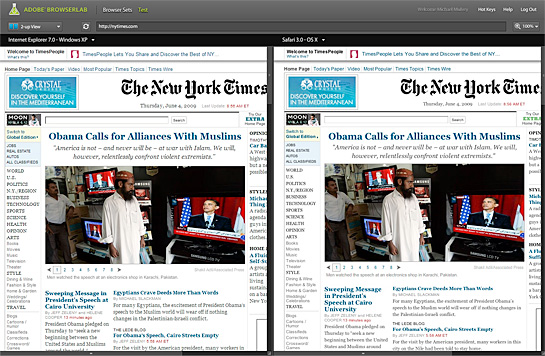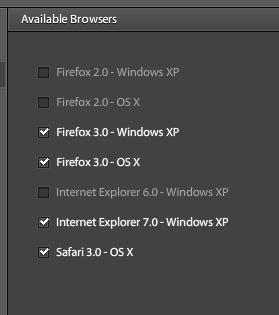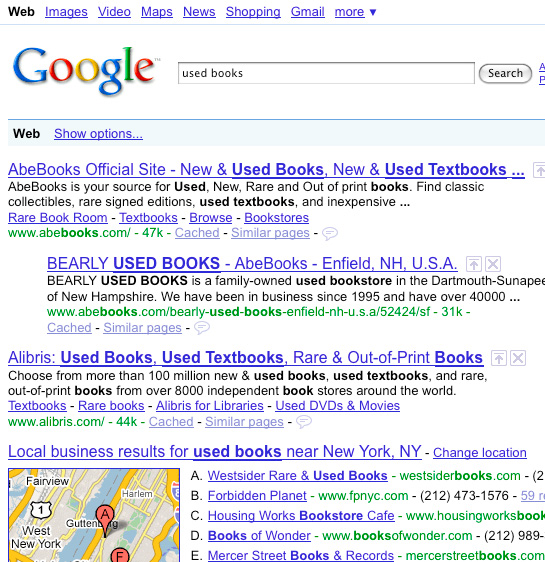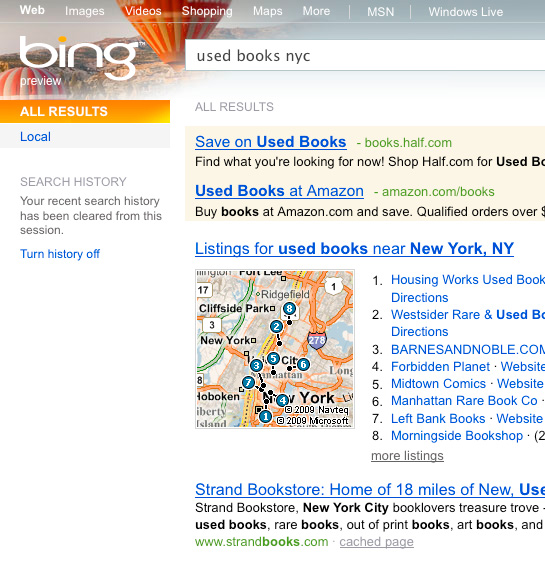I never wore Donna Karen, but still…
PSFK: SoHo Loses Iconic DKNY Mural
I won’t lie, I’m kinda sad about this, but we residents know New York is a city of constant change. Destroying and creating. Destroying and creating.
PSFK: SoHo Loses Iconic DKNY Mural
I won’t lie, I’m kinda sad about this, but we residents know New York is a city of constant change. Destroying and creating. Destroying and creating.
from BBC News:
Just 10% of Twitter users generate more than 90% of the content, a Harvard study of
300,000 users found.
How is this even remotely surprising?
Isn’t this consistent with millions of other scenarios in life?
This 90/10 ratio follows the basic theory Joseph Juran coined for this phenomenon back in the 1940’s, after the Italian economist Vilfredo Pareto.
via Wikipedia:
The Pareto principle (also known as the 80-20 rule,[1] the law of the vital few and the principle of factor sparsity) states that, for many events, roughly 80% of the effects come from 20% of the causes.
This is not to be confused with Ms. Jackson’s Pleasure Principle.

The new iPhone 3GS.

This week Adobe released a new service – BrowserLab. Type a URL into the address field and it takes screengrabs of it in web browsers for Window XP (IE7 & FF3) and Mac OS X (Safari 3.0 & FF3).
It’s a Flex application, published in Flash format, meaning that anyone can use it (you do need to sign up for an an Adobe account).
I don’t do as much cross-platform/browser testing as I used to, but I’m still excited that this service now exists. How long have we designers and developers been waiting for this type of service? Sure there’s BrowserShots and other Windows-only applications, but BrowserShots usually has a delay on screen renderings and I’m on a Mac so I can’t use the Windows-only apps that do exist.
It’s still new and a bit buggy for me – some screengrabs take a minute or 2 to get created, but I’m exciting to see where this goes.
Nice job Adobe.
(found via CNet)
UPDATE: I missed this before, but BrowserLab does have other browsers to pick from:

Brand New: Bing sets New Record in Horizontal Scaling
Armin tells it like it is on the Bing logo:
This is like setting the resolution of your screen to 6,000 pixels wide by 1,000 high. I can’t even imagine how someone arrives at a design solution like this. The shapes resulting from the strenuous horizontal scaling are simply too unflattering and unattractive. There is bad taste and then there is this.

I came across this photo at one of the many Tumblr photo blogs I now follow, big fun.
It reminded me of something i vaguely remember hearing/reading about Deniro actually driving a cab around NYC in preparation for Martin Scorsese’s Taxi Driver.
From Wikipedia:
While preparing for his role as Travis Bickle, Robert De Niro was filming Bernardo Bertolucci’s 1900. According to Peter Boyle, he would “finish shooting on a Friday in Rome…get on a plane from Italy, fly to New York”, whereupon he got himself a cab driver’s license. He would then go to a garage, pick up a real cab and drive around New York, returning it before he had to depart for Rome again.[2] Robert De Niro also acknowledged that while working on Travis’s accent, on his days off from shooting 1900, he would go to an army base in Northern Italy and tape-record the accents of some of the locals there as he felt they would be good for Travis’s character.
Daring Fireball: Why Palm’s WebOS ‘Media Sync’ iTunes Integration Can’t Be Legit
Third, if you’re still holding out any sort of hope that Palm is using some sort of heretofore sanctioned, semi-sanctioned, or even maybe-sorta-kinda-sanctioned-if-you-squint-your-eyes means for a third-party device to sync with iTunes via USB, note that the Pre, when connected to iTunes, is labelled as an “iPod”. If you think Apple would ever allow the use of “iPod” to describe anything other than an actual iPod, you’re nuts.

I imagine this is what it would look like if you combined an iPod, a Ferarri F430 and a yacht.
Amazing.
Schopfer Yachts (via PSFK)
The New York Times: Industry Fears Americans May Quit New Car Habit
Maybe this is a good habit to kick, no?
In order to be truly worthwhile, organizers have thoroughly plan out how they want people to experience their trade conferences. The delivery of content must align with agenda and objectives of the conference.
Case in point – the Wall Stree Journal’s D – All Things Digital Conference (aka D7).
Over at PBS, Mark Glaser has an insightful article on the D7 conference, highlighting what they got right, what they got wrong, and what they’re still working to improve.
Glaser explains that in the conference program, there was a section titled “Welcome to Web 3.0.”
First off – the whole Web 2.0/3.0/20.0 shit is tired. Tired.
“Web 3.0” about as relevant to the individual contributors/technologies/companies it claims to encompass as the term “Beat Generation” was it it’s contributors. Jack Kerouac, Allen Ginsberg, and WIlliam S. Burroughs are about as different in literary style and objectives as you can get.
The same can be said for 37Signals, Google and Flickr. Yes, they are all from the same ‘generation’ but that’s where the similarities end.
The other important point Glaser brings up is how D7 used (and didn’t use) technology as a vehicle for increasing and improving overall communication and thus, the overall experience and learning.
Glaser writes:
Another problem at D was the uncertain contract between conference organizers and the press and bloggers covering the event. I was told in advance by Swisher that I would not be allowed to do live-blogging in transcript form. Usually, I attend conferences and try to provide a running commentary on what people on stage are saying, largely paraphrasing what they say. It seemed like the D folks were against that idea, and they also didn’t provide WiFi Internet access in the main hall.
I first started thinking about this point after my colleague Victor wrote a post last September on his experience at The Minitek Music and Innovation Festival. Victor was disappointed that there were tons of great technological mashups and combinations available to enhance the experience of the Festival, but they weren’t exploited to their fullest.
Victor laments:
Finding a beautiful evening space (Penn Plaza) and distributing RFID bracelets wired to the concession booths was a great place to start. There was other RFID technology present in the Innovation exhibits, but sadly they weren’t configured on a unified system. This represents the single biggest missed opportunity, a central theme I’ll return to again and again, which was that there was no unifying system/platform to integrate all of the disparate moving parts. And in the wake of that lack of unification, the crowd was neither engaged nor challenged to become part of a shared experience in any meaningful way.
When we get the impulse to hold recurring industry events and create new ones, we really need to think things through and make sure that we crafting experiences that are communicating the messages in the right mediums.
Yes, many of us need to go back 40 years or so and give McCluhan another read.
Microsoft’s new search product has launched – Bing.
I’ve been playing with it for about half an hour now, and I have to say – congratulations Microsoft, you’ve finally caught up to Google.
Which is to say, Microsoft has caught up to what Google has been doing for about 5 years now.
I like how Bing has a feathered background image along the header. It’s not adding any value or clarity to the page, it’s there for one reason – so that Bing doesn’t look exactly like Google (and Yahoo for that matter).
Despite your vast financial resources, you’re always a dollar short Microsoft.
Why is that? (It’s a rhetorical question, I know why)

